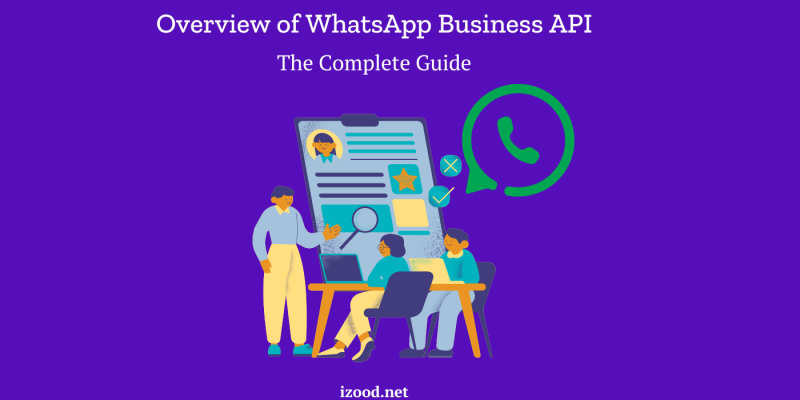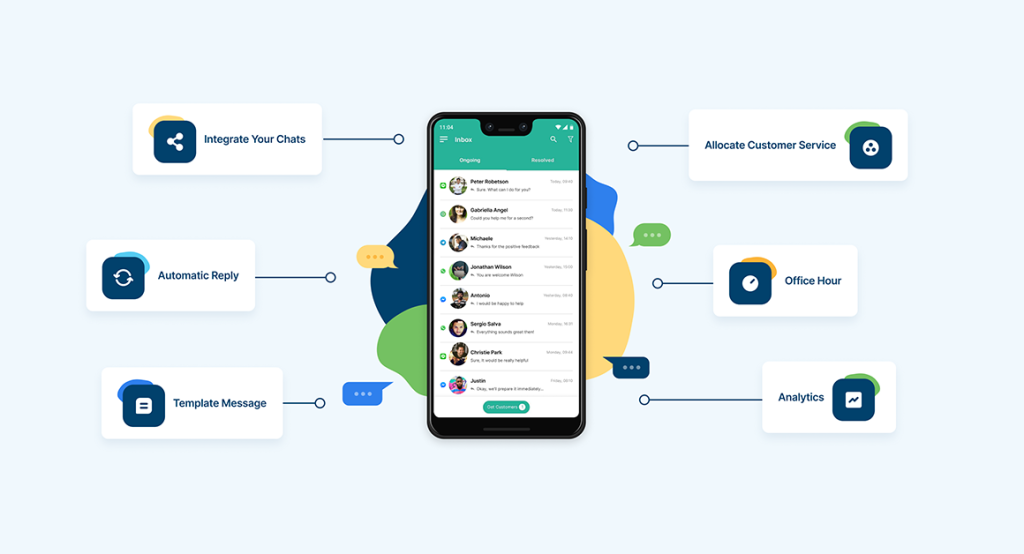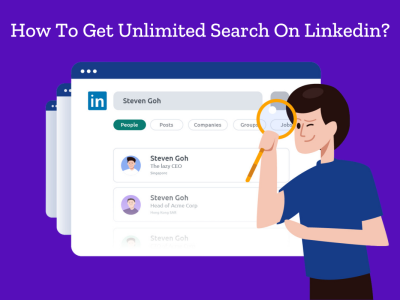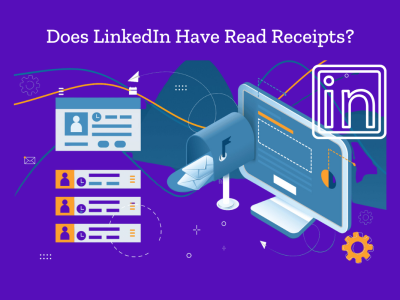
In the evolving landscape of business communications, the WhatsApp Business API stands out as a pivotal tool for medium to large enterprises aiming to enhance their customer interactions. This powerful API facilitates not just seamless messaging capabilities across vast customer bases but also integrates effortlessly with existing business systems to automate and personalize communications. Ideal for businesses seeking robust, scalable solutions for global reach, the WhatsApp Business API offers a suite of features designed to improve operational efficiency and customer satisfaction. Whether you’re looking to streamline customer service, boost engagement through targeted marketing, or provide timely updates and information, this guide covers all you need to know about implementing and maximizing the benefits of the WhatsApp Business API.
- What is WhatsApp Business API?
- Core Features of WhatsApp Business API
- Strategic Implementation
- The difference between the WhatsApp Business app and API
- How to send Messages on WhatsApp using WhatsApp Business API?
- Benefits of WhatsApp business API
- Who should consider the WhatsApp Business API?
- WhatsApp Business API costs
- Conclusion
What is WhatsApp Business API?
WhatsApp Business API is designed for medium to large businesses looking to communicate with customers at scale. Unlike the WhatsApp Business app that is aimed at small business owners, the API allows for a high degree of customization and integration with existing business software systems, making it ideal for enterprises.
Core Features of WhatsApp Business API
The WhatsApp Business API is packed with robust features designed to support efficient, secure, and engaging customer interactions. Below, we explore these key features in detail, highlighting how they can be leveraged to enhance business communication strategies.
1. Comprehensive Messaging Solutions
- Automated Responses: Automate greetings, out-of-hours messages, and frequently asked questions to ensure timely communication, even when live agents are not available.
- Interactive Messages: Utilize buttons and quick replies to streamline interactions and guide customers through pre-defined options, making the communication process faster and more user-friendly.
2. Personalized Customer Engagement
- Customer Profiles: Maintain rich customer profiles that allow personalized interactions. Use historical interaction data to tailor conversations and offer customized solutions.
- Segmented Messaging: Send targeted messages based on customer behavior, preferences, and past purchases to increase relevance and engagement.
3. Rich Media Capabilities
- Multimedia Support: Send images, videos, documents, and audio messages directly through the API. This feature is invaluable for product demonstrations, support clarifications, and engaging marketing campaigns.
- Location Sharing: Enable customers to share their location for more efficient support and services, such as in logistics and delivery tracking.
4. High-Level Security and Compliance
- End-to-End Encryption: Ensure that all communications are secured with WhatsApp’s end-to-end encryption, safeguarding customer information and maintaining privacy.
- Two-Factor Authentication: Enhance security by implementing two-factor authentication for customer interactions, providing an additional layer of protection against unauthorized access.
5. Scalable and Reliable Infrastructure
- Global Connectivity: Leverage WhatsApp’s widespread global presence to reach customers across different regions without interruption.
- High Throughput Messaging: Depend on WhatsApp’s infrastructure capable of handling high volumes of messages with minimal delays, crucial for time-sensitive communications.
6. Advanced Integration and Customization
- API Flexibility: Integrate the API seamlessly with existing business systems such as CRMs, customer support software, and analytics tools. Customize workflows to align with business processes.
- Webhooks and Real-Time Updates: Receive real-time notifications and updates about customer interactions through webhooks, enabling dynamic responses and agile management of customer queries.

Strategic Implementation
Implementing these features effectively requires a strategic approach tailored to your business needs. Whether it’s automating routine inquiries or providing personalized shopping advice, the WhatsApp Business API offers the tools to create meaningful and efficient customer interactions. By harnessing these capabilities, businesses can significantly enhance their communication strategies, leading to improved customer satisfaction and loyalty.
Implementing WhatsApp Business API: Step-by-Step Implementing the WhatsApp Business API is a strategic process that involves several key steps, ensuring compliance and maximum efficiency. This section provides a detailed walkthrough to help businesses successfully integrate and utilize the API.
Step 1: Application and Approval
- Registration with WhatsApp: The first step is applying for access through an official WhatsApp API provider. This involves submitting your business information and the intended use case for the API.
- Compliance Review: WhatsApp will review your application to ensure that your business meets their service requirements and complies with their policies. This step is crucial to maintain the integrity and security of the platform.
Step 2: Setting Up the Infrastructure
- Technical Requirements: Ensure that your existing IT infrastructure is capable of integrating with the WhatsApp API. This might require upgrading systems or provisioning new resources.
- API Integration: Integrate the API with your business systems, such as CRM, ERP, or any other customer management tools. This step typically involves working closely with your IT team or an external consultant to configure the API endpoints.
- Testing: Before going live, it’s essential to test the API thoroughly in a controlled environment. This helps identify any issues in the integration and messaging workflows.
Step 3: Onboarding and Training
- Team Training: Train your staff on how to use the WhatsApp Business API effectively. This includes training customer service representatives, marketing teams, and any other stakeholders.
- Creating Guidelines: Develop internal guidelines and best practices for using the API. This should include protocols on message timing, privacy considerations, and customer interaction.
Step 4: Launching and Monitoring
- Soft Launch: Initially, launch the service to a limited user group to gauge performance and gather initial feedback.
- Monitoring Tools: Utilize monitoring tools to track the performance of the API, focusing on metrics such as response times, message delivery rates, and user engagement.
- Feedback Incorporation: Incorporate feedback from the initial users to refine and improve the service.
Step 5: Compliance and Ongoing Management
- Regulatory Compliance: Regularly review your API usage to ensure compliance with global data protection regulations, such as GDPR if operating in Europe, or other relevant local laws.
- Updates and Maintenance: Stay updated with any changes to the WhatsApp API policies and technical requirements. Regularly update your systems and training materials as needed.
Step 6: Scaling and Optimization
- Scaling Strategy: As your business grows, plan for scaling the use of the WhatsApp API to handle increased message volumes and expanded services.
- Optimization: Continuously analyze the performance data to identify areas for optimization. This can involve adjusting the messaging strategy, improving integration features, or enhancing user interactions based on customer feedback.
The difference between the WhatsApp Business app and API
The WhatsApp Business app and the WhatsApp Business API are tailored to meet the needs of different business sizes, each with its own set of features and requirements, organized in an escalating order of complexity and functionality:

- Target User Base: The WhatsApp Business app is ideal for small business owners who handle their customer interactions personally. In contrast, the WhatsApp Business API caters to medium and large businesses that require automated systems to manage customer communications at scale.
- Functionality and Features: The Business app allows for basic business communication needs such as automated greetings, quick replies, and the ability to tag and organize chats. On the other hand, the API provides more advanced features such as bulk messaging, high-frequency messaging capabilities, and the ability to integrate with external business systems like CRM and ERP solutions.
- User Interface: The Business app operates on a familiar WhatsApp interface accessible directly via smartphones or computers, making it easy to set up and use without any technical assistance. The API, however, does not have a standard user interface and requires programming knowledge to integrate and use it effectively within existing business software ecosystems.
- Access and Setup: Access to the Business app is straightforward, with immediate setup upon downloading from app stores. The API’s setup is more involved, requiring a business to apply for access, undergo a review process by WhatsApp, and ensure compliance with WhatsApp’s operational standards.
- Scalability and Integration: The app is limited in scalability and less flexible in terms of integration with other software. The API, conversely, is highly scalable and can be integrated deeply into business operations, allowing for automated workflows and data synchronization across platforms.
- Cost Implications: The Business app is free, making it a cost-effective solution for small businesses. The API uses a pay-as-you-go pricing model where businesses are charged based on the messages sent, which can vary based on the country and type of message, making it a more substantial investment tailored to larger businesses that can leverage its capabilities for greater ROI.
- Compliance and Security: Both platforms offer end-to-end encryption, ensuring message security. However, the API requires a more rigorous adherence to data protection laws, such as GDPR, due to the potential for handling a higher volume of personal data and integration with broader business systems.
How to send Messages on WhatsApp using WhatsApp Business API?
Creating a comprehensive tutorial on how to send messages on WhatsApp using the WhatsApp Business API involves several steps, from initial setup and configuration to sending your first message. This guide assumes that you already have approval to use the API, as this is a prerequisite.
Step 1: Get Approved by WhatsApp
Before you can start using the WhatsApp Business API, you must apply and be approved by WhatsApp. This involves:
- Submitting your business information for review.
- Demonstrating a legitimate use case for the API.
- Complying with WhatsApp’s Business and Commerce Policies.
Step 2: Set Up Your Environment
Once approved, you’ll need to set up your environment:
- Choose a WhatsApp Business API Client: There are several options available, including hosting your own on-premise solution or using a cloud service provider.
- Register Your Phone Number: Your phone number will be linked to your WhatsApp Business API client. This number will be used to send and receive messages.
- Generate your API Key: This key will authenticate your API requests.
Step 3: Send a Message
Here’s a step-by-step guide to sending a message using the WhatsApp Business API:
3.1 Configure Your API Client
Ensure your API client is configured to send HTTP requests to the WhatsApp server. Depending on your setup, you might need to configure network, firewall, and port settings.
3.2 Obtain an Access Token
You’ll need an access token for authentication. Here’s how to get it using a curl command:
Replace <your-username> and <your-password> with your credentials.
3.3 Send a Message
To send a message, you’ll need the recipient’s phone number and your API URL. Use the following curl command to send a message:
Replace <your-access-token> with the access token you obtained earlier, and <recipient-number> with the recipient’s full phone number in international format.
Step 4: Handling Responses
After sending the message, handle the API response to check for success or failure:
- A 200 OK status indicates that the message was successfully sent.
- Other statuses may indicate errors, and you will need to handle them accordingly (e.g., retrying the request or logging the error).
Step 5: Monitor and Log
Monitoring and logging are crucial for maintaining records of your messages and managing errors effectively. Ensure that your system logs all responses from the WhatsApp API and monitors the status of each message.
Benefits of WhatsApp business API
The WhatsApp Business API offers several compelling benefits for businesses seeking to enhance their customer engagement and streamline communications:
1. Improved Customer Engagement
Businesses can interact with customers in real-time, using rich media like images, videos, and documents to enrich the communication experience and foster stronger relationships.
2. Global Reach
With WhatsApp’s extensive user base, businesses can effortlessly connect with customers worldwide on a platform they are familiar with and frequently use.
3. Automated Messaging
The API enables automation of responses such as welcome messages, order confirmations, and FAQs, ensuring customers receive timely interactions even outside of regular business hours.
4. High Read Rates
Messages sent via WhatsApp have significantly higher open and read rates compared to emails, ensuring important communications like reminders and alerts are seen and acted upon.
5. Seamless Integration
It integrates with existing CRM and ERP systems, allowing businesses to maintain comprehensive customer profiles and manage communications from a central platform.
6. Cost Efficiency
The pay-per-message model can be more cost-effective than traditional SMS or email marketing, especially given the higher engagement rates with WhatsApp.
7. Enhanced Security
End-to-end encryption ensures that all communications are secure, protecting sensitive customer data and maintaining privacy.
8. Scalable Solutions
The API is built to handle large volumes of messages and can scale with a business as it grows, supporting an increasing number of customer interactions without degrading performance.
9. Data-Driven Insights
Analytics features provide insights into message delivery and customer interactions, helping businesses optimize their communication strategies and improve service delivery.
10. Compliance Support
For businesses in regulated industries, the API provides features that help comply with legal standards like GDPR, ensuring customer data is handled securely and appropriately.
These benefits make the WhatsApp Business API a powerful tool for businesses aiming to enhance operational efficiency and customer satisfaction through effective communication strategies.
Who should consider the WhatsApp Business API?
The WhatsApp Business API is designed for medium to large businesses that require robust, scalable, and efficient communication tools to manage customer interactions on a large scale. Here are specific types of entities and scenarios that should consider implementing the WhatsApp Business API:
1. Businesses with High Customer Interaction Volumes
Companies that handle a large number of customer interactions daily will benefit from the WhatsApp Business API’s ability to automate responses and manage communications efficiently. This includes businesses in sectors like retail, telecommunications, and financial services where timely customer support is crucial.
2. Enterprises Requiring Global Reach
Organizations operating on a global scale that need to maintain communication with customers across different regions and time zones will find the WhatsApp Business API invaluable. The platform’s widespread use in over 180 countries makes it a strategic tool for international customer engagement.
3. E-commerce Platforms
E-commerce businesses can leverage the WhatsApp Business API to send transaction updates, shipping notifications, and personalized shopping recommendations directly to customers’ phones. This integration enhances the shopping experience and can drive higher customer satisfaction and repeat business.
4. Companies with Complex Customer Service Needs
Businesses that provide detailed customer support, such as those in the electronics or automotive industries, can use the API to send rich media messages like images, videos, and PDFs, which can be instrumental in solving customer queries more effectively.
5. Businesses Focused on Marketing and Sales
The API’s ability to facilitate personalized communication makes it an excellent tool for businesses that focus heavily on personalized marketing and sales strategies. Companies can use it to launch new products, offer exclusive promotions, and conduct customer surveys.
6. Financial Institutions
Banks and financial services companies can use the WhatsApp Business API for secure communications, sending alerts about account balances, transaction notifications, and fraud alerts directly to their customers’ WhatsApp.
7. Health and Education Sectors
Healthcare providers can use the API to send appointment reminders, health tips, and patient care instructions securely. Similarly, educational institutions can communicate with students and parents about course schedules, events, and updates.
8. Travel and Hospitality Businesses
The travel and hospitality sector can enhance customer experience by sending real-time updates about bookings, travel itineraries, check-in instructions, and promotional offers, making the customer’s journey smoother and more enjoyable.
WhatsApp Business API costs
Understanding the cost structure of the WhatsApp Business API is crucial for businesses considering its integration. The API operates on a variable pricing model that primarily depends on the number and type of messages sent, and the recipient’s country.
Cost Components
- Message Types: Costs differ based on whether the message is a “session message” or a “template message”:
- Session Messages: These are messages sent in response to a customer-initiated message within a 24-hour window. The cost for session messages is typically lower because they are considered part of an ongoing conversation.
- Template Messages: These are pre-approved messages that can be sent any time outside the 24-hour window to initiate contact with a customer. Template messages are generally more expensive than session messages because they enable businesses to reach out to customers proactively.
- Destination Country: The cost varies depending on the recipient’s country. WhatsApp applies different rates for different countries, reflecting local market conditions and telecommunications pricing.
- Volume: Some providers offer volume discounts, where the cost per message decreases as the volume of messages sent increases. This can be particularly advantageous for large enterprises sending high volumes of messages.
Pricing Model
- Per Message Fee: WhatsApp charges businesses per message sent. This fee is determined by the type of message and the destination country.
- No Setup or Monthly Fees: Unlike some other communication platforms, WhatsApp does not charge setup fees or require monthly subscriptions for the Business API.
Example Pricing
As of the latest updates, here’s an example of how pricing might work:
- In the United States, a template message might cost approximately $0.0085 per message, while a session message could be around $0.005 per message.
- In India, the costs might be lower, with template messages costing about $0.0138 and session messages around $0.0034 per message.
These prices are indicative and can vary. Businesses need to check the latest pricing details from the official WhatsApp Business API providers or their regional pricing guidelines.
Additional Costs
- Integration and Maintenance: Costs related to the initial setup, such as integration with existing IT infrastructure and ongoing maintenance, are not charged by WhatsApp but can be significant depending on the complexity of the business systems.
- Compliance and Security: Ensuring compliance with data protection regulations (like GDPR) and implementing additional security measures might incur further costs.
Conclusion
The WhatsApp Business API is a robust tool that opens new avenues for business communication. By integrating this API, businesses can enhance their customer service, reach a broader audience, and improve operational efficiency. Whether you’re looking to automate customer support, send timely notifications, or foster engaging customer interactions, WhatsApp Business API provides the necessary tools to do so effectively.







